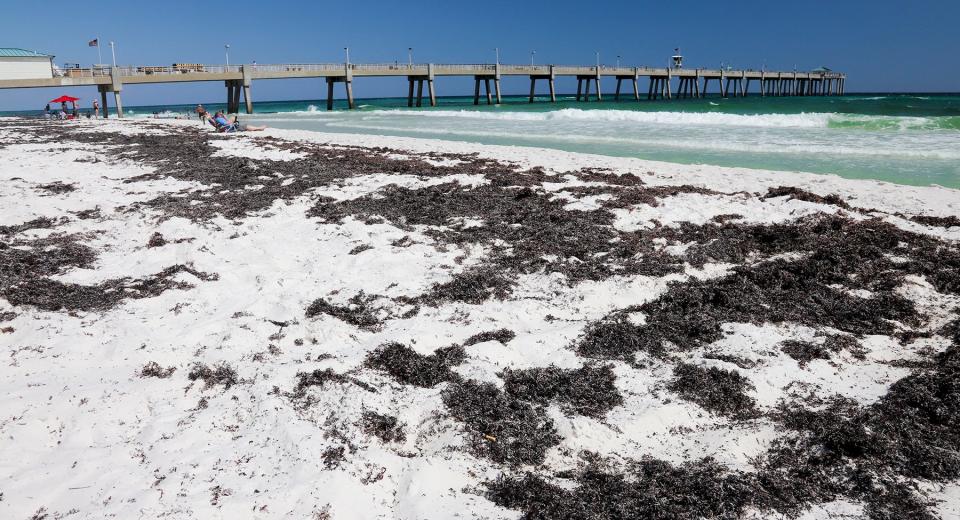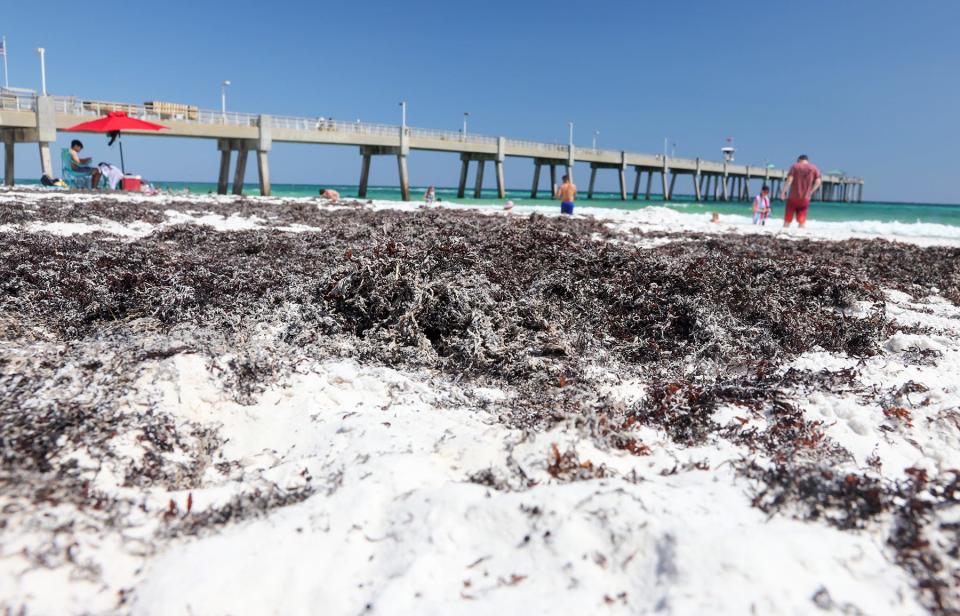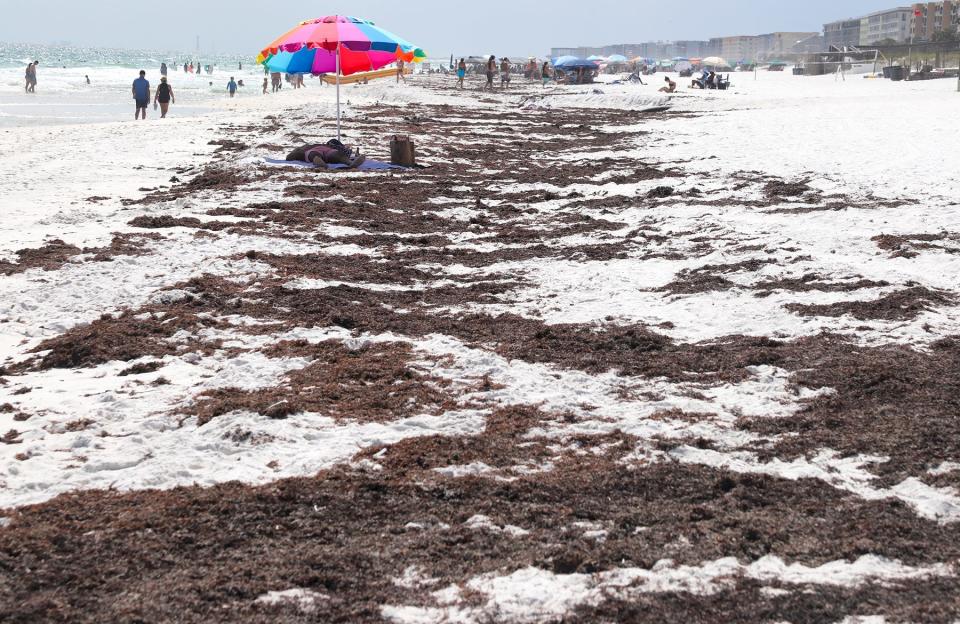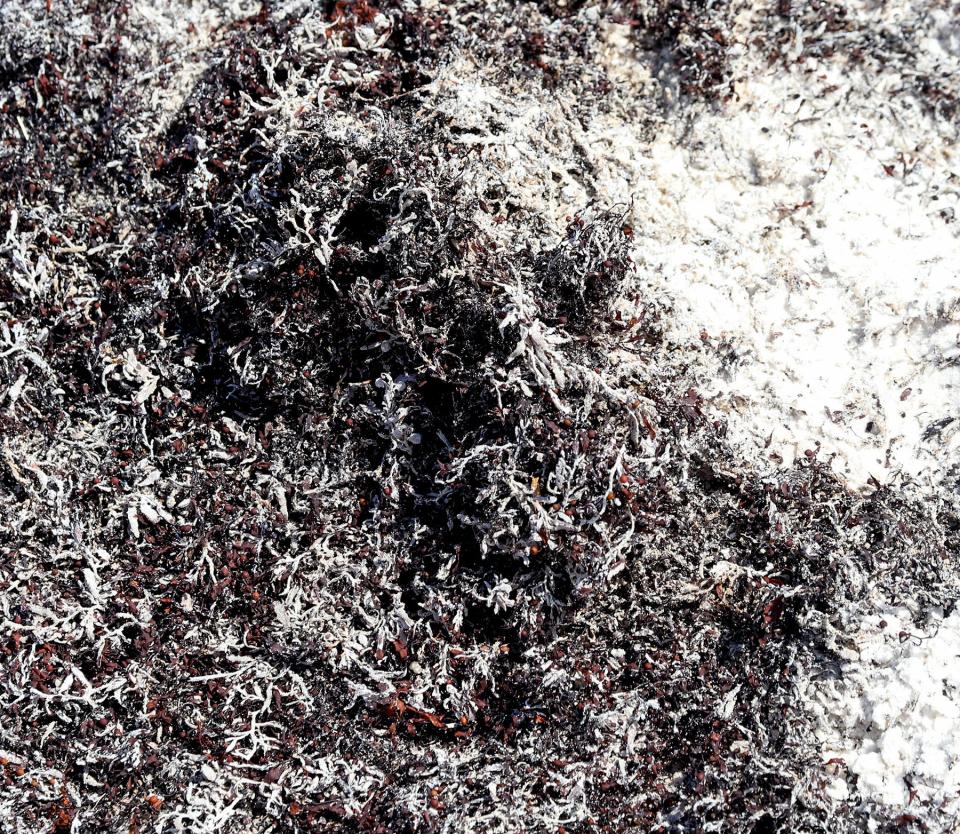What's the brown, stinky seaweed lining area beaches? Sargassum. Why it's washing ashore.
While its brown color makes it stand out more on sugar-white sand and it stinks while it's decomposing under the baking sun, sargassum seaweed that began lining area beaches several weeks ago poses no health threat to beachgoers, according to Okaloosa County Coastal Resource Manager Alex Fogg.

“It’s very much a natural-occurring thing,” Fogg said Thursday, adding that the current accumulations of it on local beaches pale in comparison to those in South Florida and the Caribbean.
“In the last few years, we have had it pretty good compared to them,” he said. “Sargassum might smell sometimes and it might look unappealing, but there is no health issue.”
Memorial Day weekend water rescues: Large crowds lead to over 30 water rescues, drowning at Crab Island over Memorial Day weekend
This year, sargassum has washed ashore along Okaloosa County and other parts of the Panhandle in greater amounts than in recent years, Fogg said. That’s because strong south winds have pushed the Gulf Loop Current, which originates in the Caribbean, farther north than normal, he said.
The current batch of sargassum on the beaches “is definitely more than we’re used to seeing,” said Fogg, who noted that because the county does not have the availability of satellite imagery, it’s hard to predict when the seaweed will stop flowing in.

“We may have another pulse of it. We just don’t know,” he said.
Fogg said the county currently is letting the sargassum decompose on the beach and has no plans to remove it.
“It might seem like a lot but there are feet and feet of it stacking up in other locations” such as South Florida, Fogg said. Locally, “this is a very low amount and it doesn’t require removal.”

More on local beaches: Sea turtle nesting season starts in May. Here's how to protect turtles and hatchlings.
County workers clean beaches on and near Okaloosa Island and in and near Destin every day using machine-pulled rakes. The rakes groom the beaches and pick up trash but are unable to remove a surplus of sargassum, Fogg said.
Owners and/or managers of condominiums, hotels and other beachfront properties who want to remove sargassum from the beach next to their buildings are free to do so by hand, which doesn’t require a permit, he said.

They should deposit the seaweed at the front of the sand fencing next to the sand dunes, where it can act as a sand trap and provide nutrients for dune grass to help stabilize the dunes, he said.
Fogg said county officials have received a number of calls in recent weeks from beachgoers who expressed concern about the accumulated sargassum.
“We tell them there’s no risk” to public health," he said. “The (Florida Department of Environmental Protection) allows them to remove the sargassum if they like, but we don’t recommend it. It provides a lot of habitat for marine and on-land creatures.”
In the Gulf, sargassum serves as essential habitat for young sea turtles while crabs, bait fish and other critters that hang around it are munched on by game fish such as mahi mahi and wahoo, he said. On the beach, shorebirds like to pick bugs and other creatures from the seaweed, he said.
Besides seeing the unsightly sargassum, regular visitors to area beaches are accustomed to dealing with the annual appearance of June grass.
“It’s an inshore type of algae,” Fogg said. “I haven’t seen it yet this year but last year it showed up in May.”
Like sargassum, June grass “doesn’t look great” onshore but it’s not harmful to humans and provides habitat for various creatures, he said.
“It’s left to break down naturally as well,” Fogg said. “Mostly, it doesn’t wash up in large amounts like the sargassum.”
This article originally appeared on Northwest Florida Daily News: Sargassum seaweed piles up on Okaloosa County Beaches

